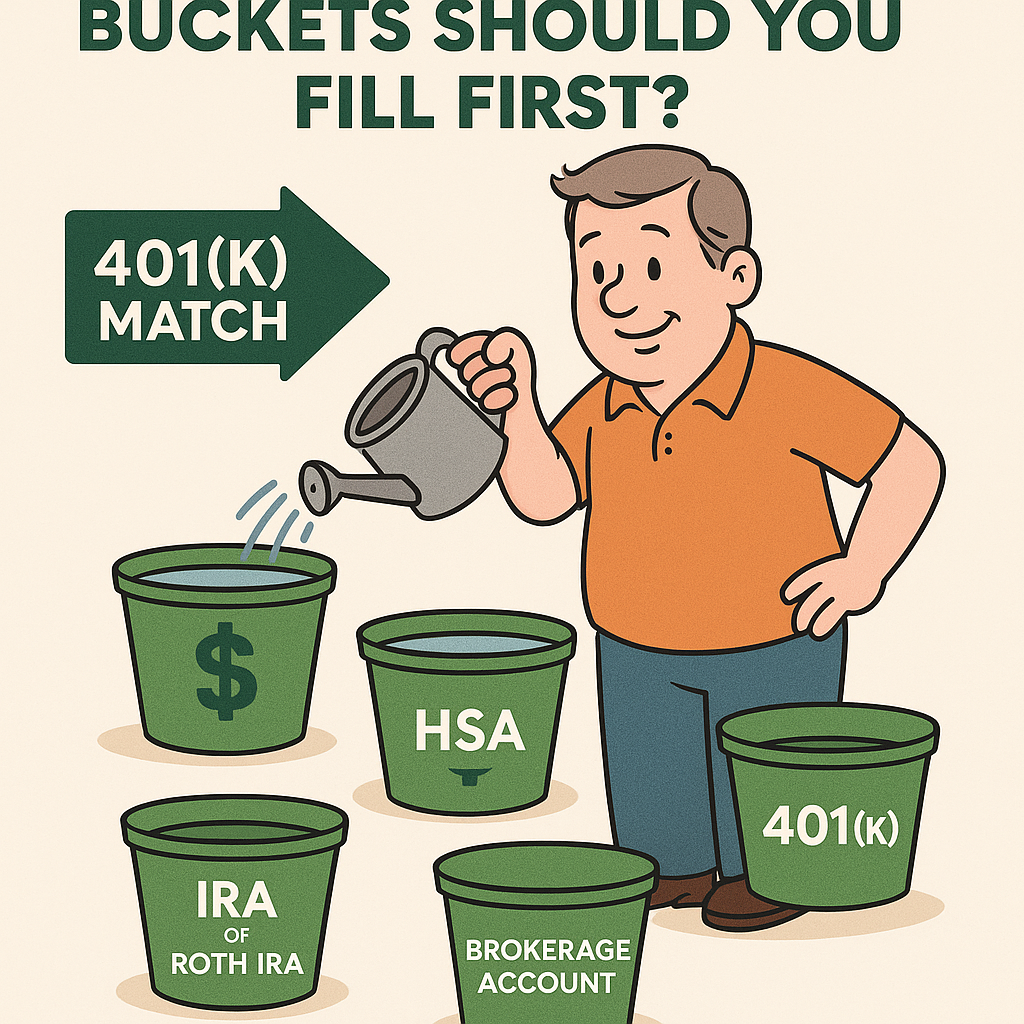A Simple Guide for the Average Person
Why This Is So Confusing
Pre-tax. Post-tax. 401(k). Roth. IRA. HSA. The government’s alphabet soup of accounts doesn’t exactly scream simple. For the average person, the question is: Where do I actually put my money first?
Here’s the straightforward order, boiled down into plain English.
Step 1: Grab Any Free Money First
- If your employer offers a 401(k) or 403(b) match, contribute at least enough to get the full match.
- Why: It’s the closest thing to “free money” you’ll ever see in finance.
Step 2: Fund Your HSA (If Eligible)
- HSAs are the unicorn: tax deduction in, tax-free growth, tax-free out (for medical).
- If you can afford to pay health costs out of pocket and invest the HSA, it doubles as a stealth retirement account.
Step 3: Max Out Your IRA or Roth IRA
- Roth IRA: Great if you expect taxes to be higher later — tax-free growth and withdrawals.
- Traditional IRA: Deductible now, taxed later. Useful if you want the tax break today.
- Contribution limits are lower, but fees and investment choices are usually better than workplace plans.
Step 4: Go Back to Your 401(k)/403(b)
- Once you’ve hit the IRA cap, pump more into your workplace plan.
- Even without a match, the tax savings + higher contribution limits ($23,000 in 2025, plus catch-ups if 50+) make it worth filling.
Step 5: Use a Taxable Brokerage Account
- When you’ve maxed the tax shelters, keep saving in a regular brokerage.
- No tax perks, but total flexibility: no age restrictions, no penalties, no contribution caps.
- Perfect for goals before 59½, like early retirement, house projects, or bridging the gap.
The “Easy Button” Order of Operations
- Match in 401(k)/403(b) (if offered)
- HSA (if eligible)
- IRA or Roth IRA
- Back to 401(k)/403(b)
- Brokerage account
The Bottom Line
Don’t overthink it — the real power is consistency, not perfection. If you fill the buckets in this order, you’ll be ahead of 90% of people trying to decode the IRS puzzle.
👉 Related Reading:



